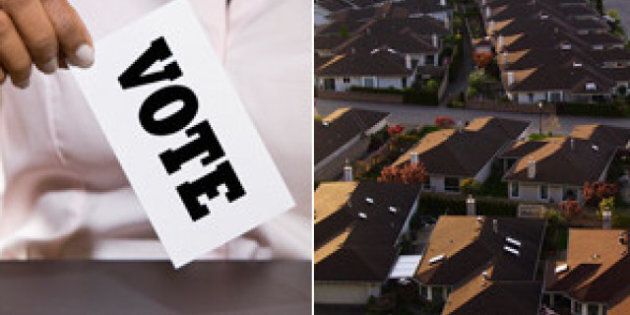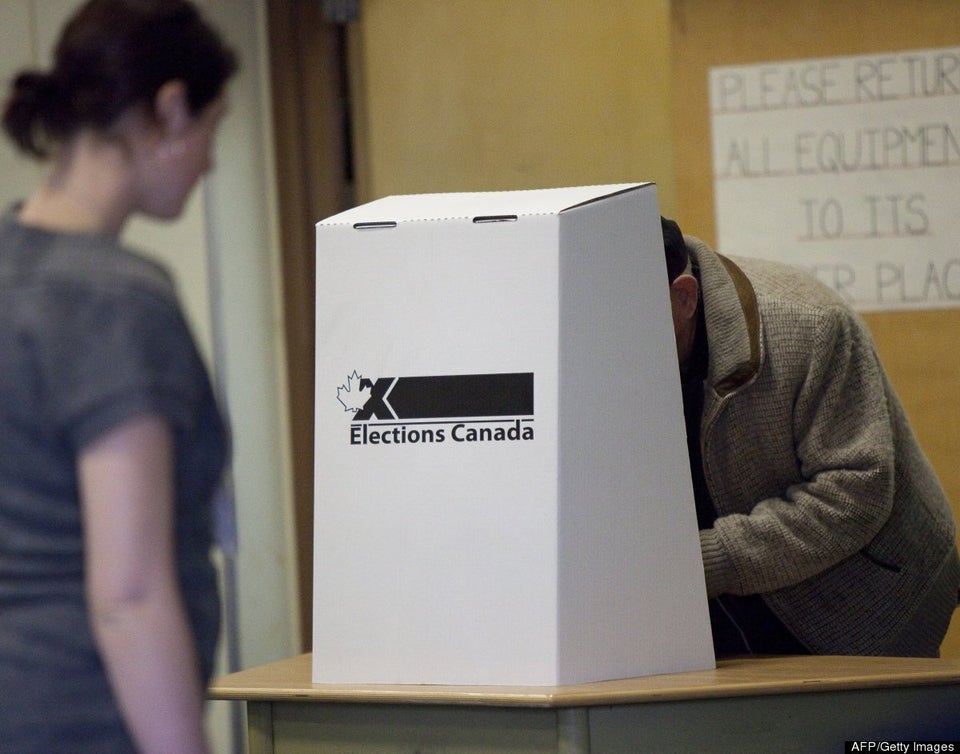
The re-drawing of Canada’s electoral boundaries has the potential to play a major role in the next federal election. With population booming in the suburbs, regions in which the Conservatives dominated in 2011, the opposition will face an even greater challenge in toppling the government.
Most of the new seats will be created in Ontario’s suburban communities, a potential battleground come 2015. Nevertheless, the Conservatives hold the inside track and with Alberta gaining a swathe of new seats, their quest for another majority government will be easier.
But Quebec and British Columbia will also be receiving new seats. Under Thomas Mulcair, the New Democrats are back in the lead in Quebec and are running neck-and-neck with the Tories in British Columbia. The new seats in the two provinces could balance out the contest, while the re-drawing of boundaries in places like Saskatchewan could also make the race much closer between the two parties.
Here are some of the largest ridings likely to see major changes, and what those changes might mean.
Éric Grenier taps The Pulse of federal and regional politics for Huffington Post Canada readers on most Tuesdays and Fridays. Grenier is the author of ThreeHundredEight.com, covering Canadian politics, polls, and electoral projections.
CORRECTION: An earlier version of this story contained a slideshow which stated Conservative MP Paul Calandra was first elected in 2011. He was actually first elected in the riding of Oak Ridges-Markham in 2008.
1st largest: Oak Ridges – Markham (Ontario)
Pop: 228,997
Density: 336.8/km2
2004, 2006, 2008: LPC – Lui Temelkovski
2011: CPC – Paul Calandra (51% to 27% LPC in 2011)
Strong Conservative riding, but the area around Markham has more NDP and Liberal support. Two bordering ridings in Markham held by the Liberals and NDP.
2nd largest: Brampton West (Ontario)
Pop: 204,146
Density: 1,977.9/km2
2004, 2006: LPC – Colleen Beaumier
2008: LPC – Andrew Kania
2011: CPC – Kyle Seeback (45% to 35% LPC)
A dense riding surrounded by other highly populated ridings. Large pockets of Liberal support, particularly near a region of Liberal support in neighbouring Mississauga – Brampton South.
4th largest: Vaughan (Ontario)
Pop: 196,068
Density: 897.5/km2
2004, 2006, 2008: LPC – Maurizio Bevilacqua
2010, 2011: CPC – Julian Fantino (56% to 30% LPC in 2011)
Solidly Conservative after a close by-election in 2010, but has a long Liberal history and is bordered to the south by two Liberal ridings and one close three-way contest.
5th largest: Bramalea – Gore – Malton (Ontario)
Pop: 192,020
Density: 1,342.4/km2
2004, 2006, 2008: LPC – Gurbax Singh Malhi
2011: CPC – Bal Gosal (34% to 34% NDP)
Very close three-way race, with Liberals finishing third with 29% support. A patchwork of Liberal, Conservative, and NDP support, but surrounding areas are relatively strong Conservative ridings.
6th largest: Mississauga – Erindale (Ontario)
Pop: 160,663
Density: 3,445.6/km2
2004: LPC – Carolyn Parrish
2006: LPC – Omar Alghabra
2008, 2011: CPC – Bob Dechert (47% to 34% LPC in 2011)
Pockets of Liberal support scattered about, but bordered by another Liberal riding to the northeast.
7th largest: Fleetwood – Port Kells (British Columbia)
Pop: 160,129
Density: 1,511.3/km2
2004, 2006, 2008, 2011: CPC – Nina Grewal (48% to 33% NDP in 2011)
Has voted Conservative, but western section of riding has significant NDP support, and the two ridings to the west are held by the New Democrats.
8th largest: Nepean-Carleton (Ontario)
Pop: 159,032
Density: 141/km2
2004, 2006, 2008, 2011: CPC – Pierre Poilievre (54% to 25% LPC in 2011)
Very large riding that stretches from suburban Ottawa to rural areas. Likely to have parts of it attached to more urban sections of Ottawa, including the strongly Liberal riding of Ottawa South.
9th, 10th, 11th, 13th, 14th, and 16th largest: Ridings in Calgary and Edmonton
All have given Conservatives strong majorities, and the added ridings in Alberta are accordingly expected to deliver five or six seats for the Conservatives.
18th largest: Mississauga – Brampton South (Ontario)
Pop: 147,096
Density: 1,885.7/km2
2004, 2006, 2008: LPC – Navdeep Bains
2011: CPC – Eve Adams (45% to 35% LPC)
Riding has areas of Liberal strength towards Mississauga, where neighbouring ridings are also more supportive of the Liberals.
21st largest: Montcalm (Quebec)
Pop: 144,141
Density: 160/km2
2004, 2006, 2008: BQ – Roger Gaudet
2011: NDP – Manon Perreault
Though there is no more than a residual BQ vote, this and neighbouring ridings used to give Bloc strong majorities. If BQ returns, new ridings in the area could be close NDP/BQ battles. If NDP holds strong, they will increase the party’s numbers in the House.

